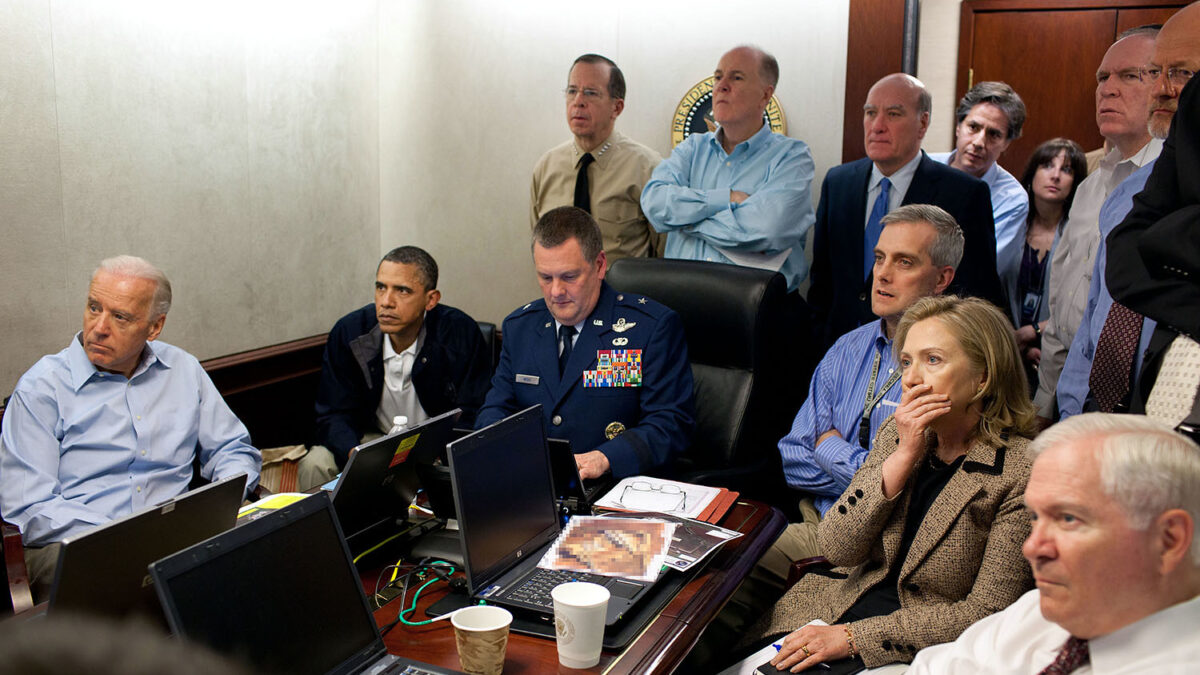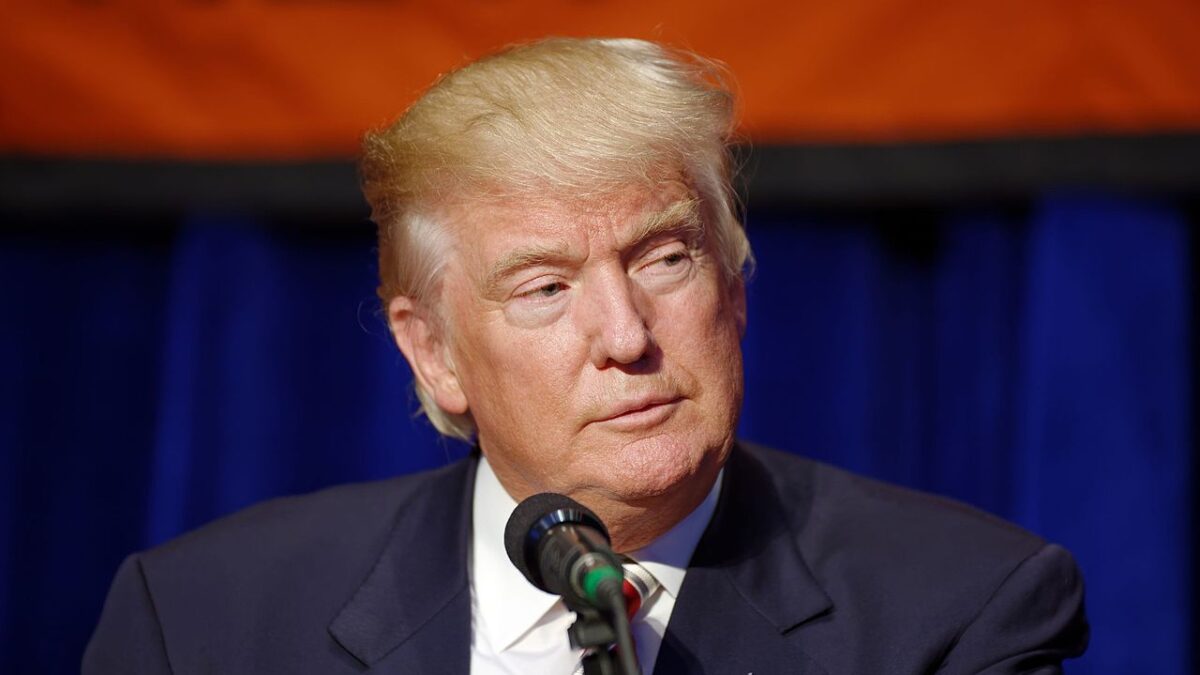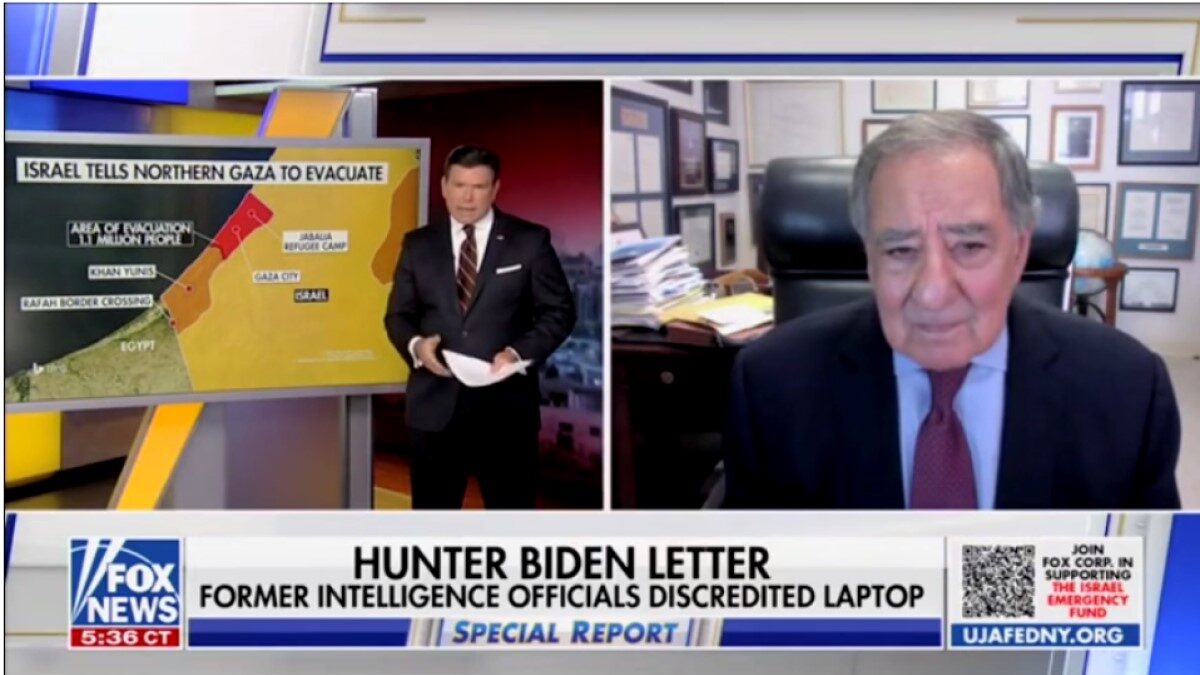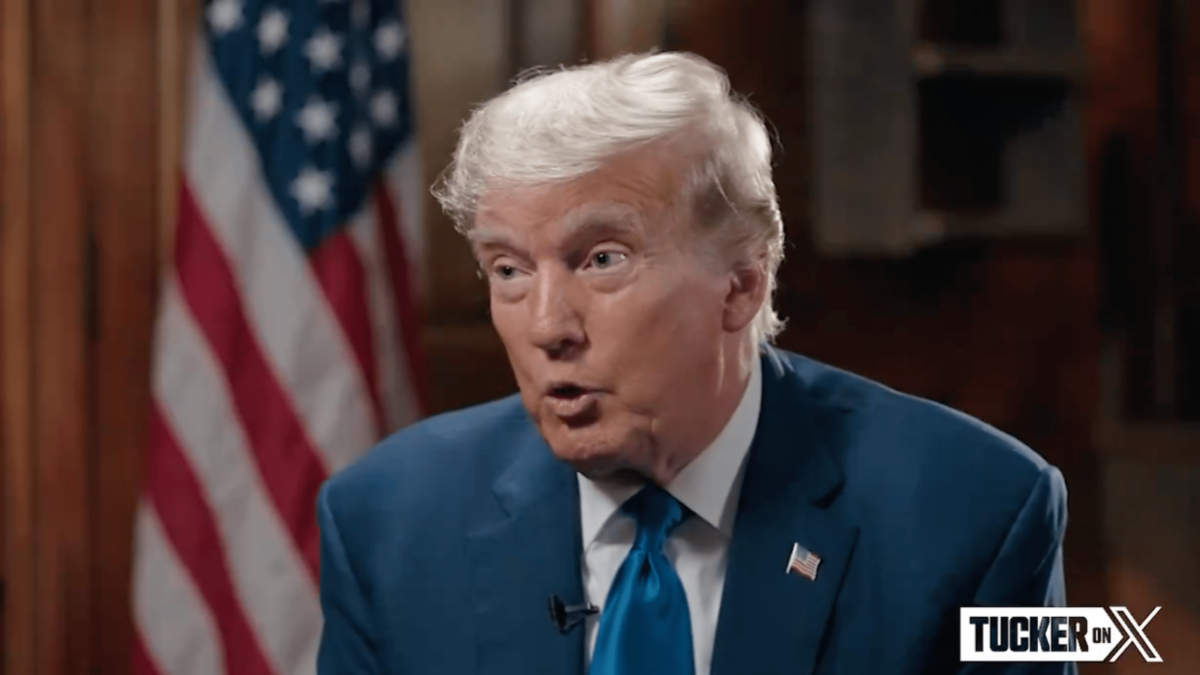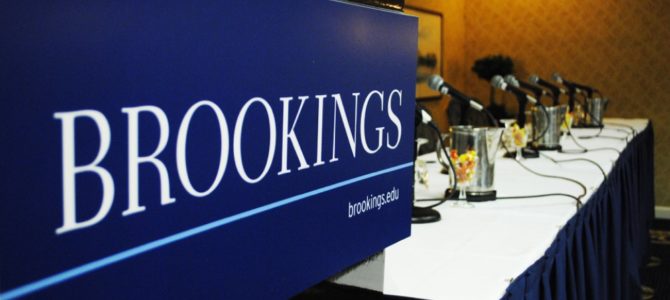
In April 2021, the Brookings Institution publicly confirmed that Special Counsel John Durham had subpoenaed records from the D.C.-based left-wing think tank in December 2020. The friendly reporters at Time magazine framed the subpoena as limited to the decades-old employment record of former Brookings staffer Igor Danchenko.
Last week’s indictment of Danchenko, however, provides a perfect reminder that Brookings was ground zero for the Russia collusion hoax, with many key staff embroiled in the damaging lie that Donald Trump colluded with Vladimir Putin to steal the 2016 election.
On Thursday last, Durham charged Danchenko in a five-count indictment with lying to the FBI during the agents’ questioning of him related to his role as Christopher Steele’s “Primary Sub-Source” for the notorious dossier that enabled Obama administration surveillance of the Trump campaign. The details in the 39-page speaking indictment provide further evidence that Durham’s team has been steadily unraveling the mess of Spygate, with the most recent thread leading to the Clinton camp—and the left-leaning Brookings Institution.
Did Danchenko Talk To ‘PR Executive-1’?
While the indictment charged Danchenko with lying to the FBI about Sergei Millian serving as a sub-source for the dossier, it was Danchenko’s allegedly false claim that he never communicated with “PR Executive-1” that proves more significant for purposes of uncovering the truth behind the Russia conspiracy hoax.
Shortly after the indictment was unsealed, attorney Ralph Martin confirmed that his client, Charles Dolan Jr., was the unnamed “PR Executive-1.” The revelation that Danchenko used Dolan as a “sub-source” for the dossier is significant because of Dolan’s long-time connections to the Clintons and the Democrat Party—and because none of what appears to have been sourced to Dolan was true, including one claim in the dossier that Dolan invented.
So, with the Danchenko indictment, the public now knows that a Clinton crony in the person of Dolan fed Danchenko false information that Danchenko then presented to Steele as intel. Steele then regurgitated Danchenko’s claims in the Clinton campaign-funded dossier the former MI6 agent provided the FBI.
The indictment’s discussion of the Dolan-Danchenko relationship revealed another detail that, while unimportant for purposes of the charged crimes, proves significant to understand the interrelationship of the many actors pushing the Russian collusion hoax — namely, how Danchenko and Dolan met.
Talk About Incestuous DC Relationships
According to the indictment, in February 2016 a Brookings Institution employee, Fiona Hill, introduced Danchenko to Dolan. Danchenko knew Hill, as he had also worked for the think tank as a Russia analyst from about 2005 to 2010. During that time, as the inspector general’s report on FISA abuse would later reveal, Danchenko was under investigation for being a potential Russian agent.
Significantly, Hill also introduced Danchenko to Steele, a longtime friend of hers, in about 2010. Following Hill’s introduction of Danchenko and Steele, Steele’s firm Orbis hired Danchenko as a contractor for various work, ultimately resulting in Danchenko serving as the “Primary Subsource” for the Steele dossier.
Hill also communicated with Steele about his work on the dossier, meeting with him in October 2016 while she still worked for the Brookings Institution. Hill continued to speak with Steele into 2017, after she had left the Brookings Institution and accepted a position in the Trump administration with the National Security Council.
Hill was not the only Brookings employee connected to the Russia collusion hoax. As Chuck Ross detailed for The Daily Caller more than a year ago, testimony by Steele in the defamation case filed against him in the United Kingdom by Aleksej Gubarev, a Russian tech executive, established that the president of the Brookings Institution at the time, Strobe Talbott, called Steele “out of the blue in August 2016,” asking about Steele’s anti-Trump project.
Like Dolan, Talbott’s Clinton-crony credentials were impressive: He served as a deputy secretary of state under President Clinton and on the State Department’s foreign affairs advisory board at the time Hillary Clinton served as secretary of state.
Clinton’s top friend at the Brookings Institution would speak with Steele again. The lead lawyer in the U.K. defamation case against Steele stated that Steele “telephone[d] Mr. Talbott on 2nd or 3rd November 2016, and Mr. Talbott asks for copies of the memoranda to discuss with John Kerry and other officials at the State Department.” Fusion GPS later provided a copy of the dossier to Talbott.
The Plot Speeds Up After the 2016 Election
Then, after Trump’s surprise 2016 defeat of Hillary Clinton, according to the lawyer taking on Steele, Steele wrote to the Brookings president on November 12, 2016 about the dossier: “Dear Strobe, I know this is not straight forward but we need to discuss the package we delivered to you the other week, and the sooner the better. What you thought of it, what you did with it, how we (both) should handle it and the issues it highlights going forward, etc.”
Talbott later provided Hill, who was then at the State Department under the Trump administration, a copy of the dossier, one day before BuzzFeed published it.
Steele’s testimony in the U.K. defamation case revealed further connections to the Brookings Institution, with Steele claiming either Susan Rice, who was Barack Obama’s national security advisor at the time, or Victoria Nuland, Obama’s assistant secretary of state, had briefed Talbott on the work Steele was doing. In his testimony, Steele noted Rice and Nuland had been Talbott’s colleagues at Brookings.
Steele pointed out that Talbott had been out of government work for 15 years. Then Steele reiterated his claim: “He was a Russian expert,” referring to Talbott, “He was consulted, I believe, by both National Security Advisor Rice and Assistant Secretary Nuland, both of whom worked with him in the Brookings Institution” before they joined the Obama administration. Steele further testified that he understood Talbott had been speaking with both Nuland and another Obama secretary of state, John Kerry.
A spokeswoman for Rice later told The Daily Caller that it was “utterly and completely false” that Rice had spoken with Talbott regarding Steele’s investigation. Conversely, Nuland, who had served as the chief of staff for Talbott when the latter had served as deputy secretary of state in the Bill Clinton administration, declined The Daily Caller’s request for comment.
Nuland’s Connections to Brookings, the Steele Dossier
While Nuland’s relationship with Talbott and Brookings dated back to at least the 1990s during the Clinton administration, it remained fresh in 2016 and beyond. Just two years before the Steele dossier came on the scene, Nuland and her husband, Robert Kagan, who served as a senior fellow at Brookings, were described as “the ultimate American power couple.” Following Trump’s election, Nuland joined Brookings as a non-resident scholar, although she is now back officially working for Democrats as the Biden administration’s number three diplomat.
But back in 2016, Nuland was working for the Obama administration as an assistant secretary of state. In that role, she reportedly approved a July 5, 2016, meeting between Steele and an FBI agent. Nuland would later testify that in mid-July of 2016 she first saw excerpts of the dossier.
Steele likewise testified that he understood the FBI and State Department had been discussing the information “from the get-go,” and that before he met with the FBI in London in early July, the agent had to “clear his lines with Victoria Nuland.”
Nuland’s involvement was later confirmed by Jonathan Winer, another high-level State Department official. Winer claimed he met with Steele in September 2016 and reviewed a copy of the dossier, after which he prepared a two-page summary of Steele’s “intel” and shared it with Nuland. Nuland “indicated that she felt that [Sec. of State John Kerry] needed to be made aware of this material,” according to an op-ed Winer penned for the Washington Post after details emerged of his role in Spygate.
Winer’s involvement was not limited to the Steele dossier, however, as will be seen shortly. Returning first to Brookings President Strobe Talbott’s connection to the players: While Talbott’s engagement with Steele is well documented, a statement an attorney made in the course of the defamation case against Steele raises further questions concerning the Brookings president’s communications with Sir Andrew Wood. In the course of that case, the defamation attorney claimed that Wood reportedly “telephoned Mr. Talbott on 2rd or 3rd November.”
While it is unclear what, if any, communications Talbott and Wood had, Durham’s team alleged in the indictment that Talbott’s fellow Clinton crony, Dolan, noted in an email that he is “[a]lso in conversation with former British Ambassador who knows [Steele],” an apparent reference to Wood.
Wood Connects to John McCain and James Comey
Wood proves significant to the story because he later met with the now-deceased Sen. John McCain and his McCain Institute assistant, David Kramer, while the three were at the Halifax International Security Forum. Kramer testified that, while there, Wood briefed them both on Steele’s work. Kramer then flew to London to meet Steele and review the dossier.
The following day, after Kramer returned to the United States, Fusion GPS provided a copy of the dossier for McCain. McCain then passed it to then-FBI Director James Comey. McCain also asked Kramer to brief Celeste Wallander and Nuland. (Kramer, apparently of his own initiative, also provided a copy of the dossier to several media outlets.)
Kramer’s briefing of Nuland connects her again to the dossier. But Nuland was not the only one of the pair connected to the Brookings Institution: Over the course of her long D.C. career, Wallander had previously served as a member of the joint Brookings Institution-Center for Strategic and International Studies’ HIV/AIDS delegation to Russia.
The Brookings Institution’s Benjamin Wittes
Even more connected to Brookings was Benjamin Wittes, a senior fellow there. Wittes also provided Comey a copy of the dossier, writing in an email: “I’m writing because a very strange document has crossed my desk that may — or may not — have implications for investigations you guys are conducting.”
Wittes, who had co-founded the Brookings Institution’s Lawfare collaboration, then spent the next several years, along with his Lawfare colleagues, pushing the Russia collusion hoax, doing irreparable damage to our country.
Even after the Michael Sussman indictment revealed the Alfa Bank-Trump conspiracy had been hatched by the Clinton campaign and then peddled to FBI General Counsel James Baker, Wittes remained defiant in his defense of the news, calling the story “a sleazy one,” but “pretty typical of opposition research efforts in high-stakes campaigns.”
The Clinton-Brookings connection to the Russia collusion hoax also reached Hillary Clinton’s foreign policy advisor, Jake Sullivan. Earlier this week, Fox News reported that Sullivan, who now serves as the national security adviser for President Biden, has been identified as the unnamed “foreign policy advisor” for Hillary Clinton in the indictment Special Counsel Durham returned against Sussmann.
The Sussmann indictment charged the Perkins Coie attorney with lying to FBI General Counsel Baker. Sussmann had briefed Clinton’s foreign policy advisor on the Alfa Bank story. Shortly after, Sullivan began pushing that false story broadly throughout the press. While Sullivan helped the Clinton campaign, he was also serving as a member of the “Order from Chaos Task Force,” of the Brookings Institution.
Beginning in summer 2015 and through December 2016, Sullivan and other task force members met over seven sessions to conduct “a deep dive on U.S. foreign policy,” Brookings president Talbott explained in the acknowledgment portion of the final report issued in February 2017. Among others, Talbott noted the task force’s appreciation for the time and efforts of Hill.
Brookings, Brookings, Everywhere
Another Brookings connection predates the Steele dossier, with the production in about April 2016 of the “Cody Shearer dossier,” which mirrored in some ways the reporting in the later-crafted Steele dossier. Shearer was the brother-in-law of the Brookings Institution president and gave his own “dossier” report to Steele, who then included it in the dossier. Later, close Clinton friend and fixer Sidney Blumenthal provided Winer a copy of the Shearer report as well.
The Brookings Institution’s October 17, 2016, event reveals another interesting connection—between the liberal think tank and David Korn. Korn, a reporter at Mother Jones, served on a panel at the D.C. think tank around the same time Steele spoke to Korn about the dossier. Korn would later publish a story on the dossier on October 31, 2016, while giving Baker, then the FBI’s general counsel, a copy of the dossier.
Baker is the same government official targeted by Sussman, the Perkins Coie attorney Durham indicted a little more than a month ago, for allegedly lying about whether his Alfa Bank whitepapers and information flowed from his work from a client. Since then, Baker has officially joined the ranks of both Brookings and its affiliate, the Lawfare Institute, moving there from the FBI in May 2018.
And Much More Likely to Come
These many Clinton-Brookings connections, and possibly more, will likely be further exposed as the Durham special counsel probe continues. The best clue to this comes from the fact that Brookings itself handed the friendly reporters at The New York Times news that Durham had subpoenaed the think-tank.
Without Brookings acknowledging the existence of the subpoena, Durham’s move to obtain documents from the organization would be unknown to the public. But by revealing the existence of the subpoena, Brookings succeeded in framing Durham’s interest in documents held by Brookings as limited to Danchenko’s long-ago work with the think tank.
“Mr. Durham has obtained documents from the Brookings Institution related to Igor Danchenko, a Russian researcher who worked there a decade ago,” the Times reported back in April. The same article reiterated the point, claiming “Durham obtained old personnel files and other documents related to Mr. Danchenko from the Brookings Institution, a prominent Washington think tank, using a subpoena.” “Danchenko had worked there from 2005 until 2010,” the article explained, presenting the connection with Brookings as antiquated.
Brookings’ general counsel, Michael Cavadel, “confirmed the subpoena for records and other materials about Mr. Danchenko,” saying none of the responsive documents “contained information associated with the reports known as the Steele dossier.”
But that does not mean Durham’s subpoena was limited to information about Danchenko. Here it is important to remember that a grand jury may issue a subpoena broadly seeking relevant information—the recipient need not be accused, or suspected, of a crime.
Given the extensive relationships between the various government employees pushing the Russia collusion hoax, Clinton cronies, and the individuals connected to the Brookings Institution, it would be shocking if Durham did not broadly subpoena Brookings, seeking all information related to the various players and the Russia collusion investigations, including communications between the various Clinton players, Brookings, and Crossfire Hurricane and former Special Counsel Robert Mueller’s investigatory teams.
Cavadel, the general counsel for Brookings, did not respond to a request for comment from The Federalist. But if Durham keeps talking through his indictments, no comment may be necessary.


